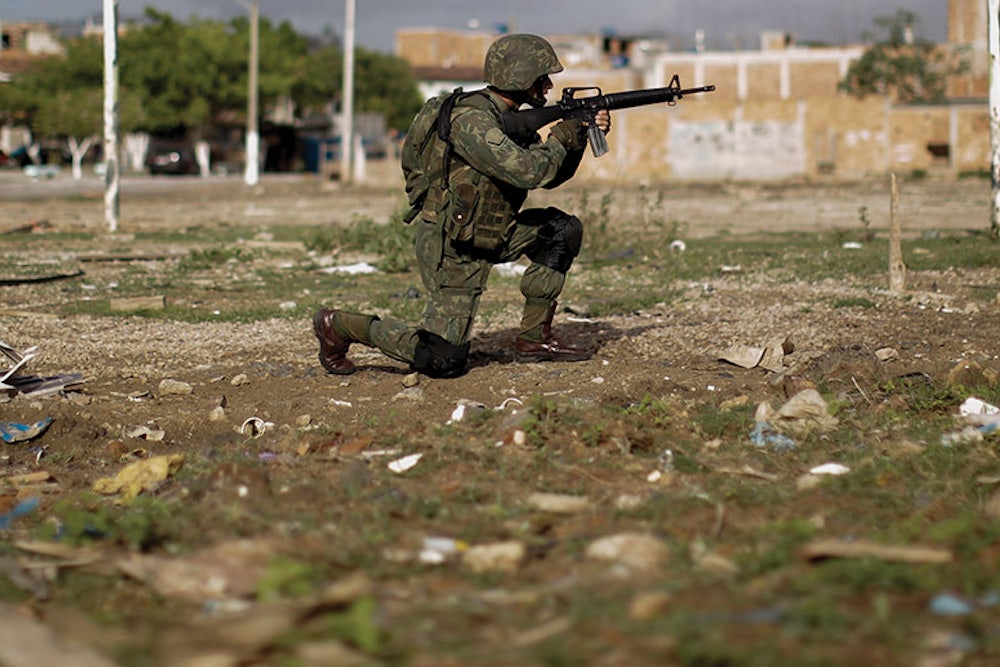Sometimes a picture looks too good to be true. This is so good I wondered if it might be one of those scenes lit and staged by David Levinthal, using little model soldiers. The soldier has even adopted one of the standard action poses these models come in. It’s a position designed to provide maximum stability and, by extension, accuracy of fire, but this guy does not just look stable, he looks molded, like he’s never going to get up and join the rest of his unit or platoon. Where are they, by the way? Isn’t it a bit odd that he should be all alone like this? His isolated stillness translates into a kind of visual silence, broken only by the suspected echo of the photographer calling out an order—“Take a knee!”—before taking the picture.

The lack of urgency that usually characterizes combat photography—Robert Capa reckoned it was a good idea to shake the camera a bit to impart immediacy and danger—is enhanced by the impeccable focusing. Foreground trash and background buildings are blurred, clearing to sharpness only in the center where the soldier is doubly framed by the borders of the picture and by the goalpost. So our attention focuses on a compound optical pun, converging on the word shoot: taking a shot at goal, penalty shoot-out, shooting a photo, firing a shot, etc.
You see a lot of photos these days of soccer pitches and goalposts, particularly from parts of the world that are either economically blighted, politically troubled, or—if the photographer is really lucky—in the grips of full-blown genocide. The more wrecked the surroundings—Gaza, Haiti—the greater the transformative promise of the goalposts. What would otherwise be a patch of good-for-nothing wasteland becomes a theater of barefoot dreams. The goal becomes a symbol both of all that is hoped for and achievable and, at the same time, a substitute for the missed goal of economic prosperity or independence.
In this instance, the layers of meaning run deep because it’s Brazil, home of the most beautiful soccer ever played. The soldier is part of an operation to clean out the Mare slum complex in Rio ahead of the World Cup. Some of the highest-earning stars, playing for the wealthiest clubs in Europe, are from favelas like Mare; they will return home this summer to play for their national team in front of a TV audience of billions. The romance of Brazilian football, its history of mesmerizing skill, is inescapably linked to the way that kids start playing in places like this, making do with stones or empty drink cans as a substitute for proper balls, without boots or shin pads. Those knee pads sported by the soldier seem, in this context, like the embodiment of pampered luxury. But the clinching detail, proof that Felipe Dana has indeed scored with this shot, is the bird perched on the cross bar: unmoved and unmoving, keeping an eye on things like a bird of photographic prey.
